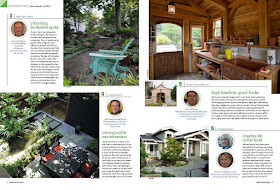Hemerocallis x 'Wide Wide World'
Daylily
Type Perennial
Hardy range 2A to 6A
Height 24" to 36" / 60cm to 90cm
Spread 24" to 4' / 60cm to 1.20m
Growth rate Average
Form Irregular or sprawling and upright or erect
Exposure Partial shade or partial sun to full sun
Persistence Deciduous
Hardy range 2A to 6A
Height 24" to 36" / 60cm to 90cm
Spread 24" to 4' / 60cm to 1.20m
Growth rate Average
Form Irregular or sprawling and upright or erect
Exposure Partial shade or partial sun to full sun
Persistence Deciduous
Bloom Color Red
Bloom Time Summer
The flowers are showy and suitable for cut flowers.
Bloom Time Summer
The flowers are showy and suitable for cut flowers.
Environment
This plant tolerates drought.
This plant will grow in moist soil.
Suitable soil is well-drained/loamy, sandy or clay.
The pH preference is an acidic to neutral (less than 6.8 to 7.2) soil.
This plant tolerates drought.
This plant will grow in moist soil.
Suitable soil is well-drained/loamy, sandy or clay.
The pH preference is an acidic to neutral (less than 6.8 to 7.2) soil.
Leaf Color Green
Fall Color No change in fall color
This plant has attractive foliage.
Fall Color No change in fall color
This plant has attractive foliage.
Culture Notes
Hemerocallis hybrids come in a wide range of colors, flowering times and sizes, and some even come with a fragrance. For the most part, daylilies are long-lived, hardy perennials that are tolerant of the sun. However, some species will show sun scald and prefer partial sun. Daylilies are adaptable to a wide range of soil conditions, and most bloom from late June until the first frost (depending on the cultivar). These plants attract both butterflies and hummingbirds and, usually, are both heat and drought resistant. Hemerocallis are extremely tough plants that spread rapidly in most conditions, thereby choking out weeds without becoming invasive themselves. The best time to plant daylilies is early spring. Although the individual blooms are short-lived, the number of blooms you get from an average flower stalk continues on for weeks.
Daylilies adapt to almost any location that provides at least six hours of sunlight, but it's best to plant them in a prepared, raised bed of soil that is high in organic matter. For clay soil, coarse sand and organic matter should be mixed in. When planted, the crown should be even with the soil line. The growth rate of daylilies can be increased via generous irrigation practices. At the end of the flowering season, remove the spent flower stalks only so that the remaining dying foliage will protect the center of the plant through the colder winter months. Also, division of the plant every two or three years will increase stem strength and flower size.
'Wide Wide World' has rosey-red petals with a light orange throat. It is a repeat bloomer and goes dormant during the winter months. As a tetraploid Daylily, it is generally a stronger plant and has larger, richer and more vivid blooms and color.
Hemerocallis hybrids come in a wide range of colors, flowering times and sizes, and some even come with a fragrance. For the most part, daylilies are long-lived, hardy perennials that are tolerant of the sun. However, some species will show sun scald and prefer partial sun. Daylilies are adaptable to a wide range of soil conditions, and most bloom from late June until the first frost (depending on the cultivar). These plants attract both butterflies and hummingbirds and, usually, are both heat and drought resistant. Hemerocallis are extremely tough plants that spread rapidly in most conditions, thereby choking out weeds without becoming invasive themselves. The best time to plant daylilies is early spring. Although the individual blooms are short-lived, the number of blooms you get from an average flower stalk continues on for weeks.
Daylilies adapt to almost any location that provides at least six hours of sunlight, but it's best to plant them in a prepared, raised bed of soil that is high in organic matter. For clay soil, coarse sand and organic matter should be mixed in. When planted, the crown should be even with the soil line. The growth rate of daylilies can be increased via generous irrigation practices. At the end of the flowering season, remove the spent flower stalks only so that the remaining dying foliage will protect the center of the plant through the colder winter months. Also, division of the plant every two or three years will increase stem strength and flower size.
'Wide Wide World' has rosey-red petals with a light orange throat. It is a repeat bloomer and goes dormant during the winter months. As a tetraploid Daylily, it is generally a stronger plant and has larger, richer and more vivid blooms and color.































